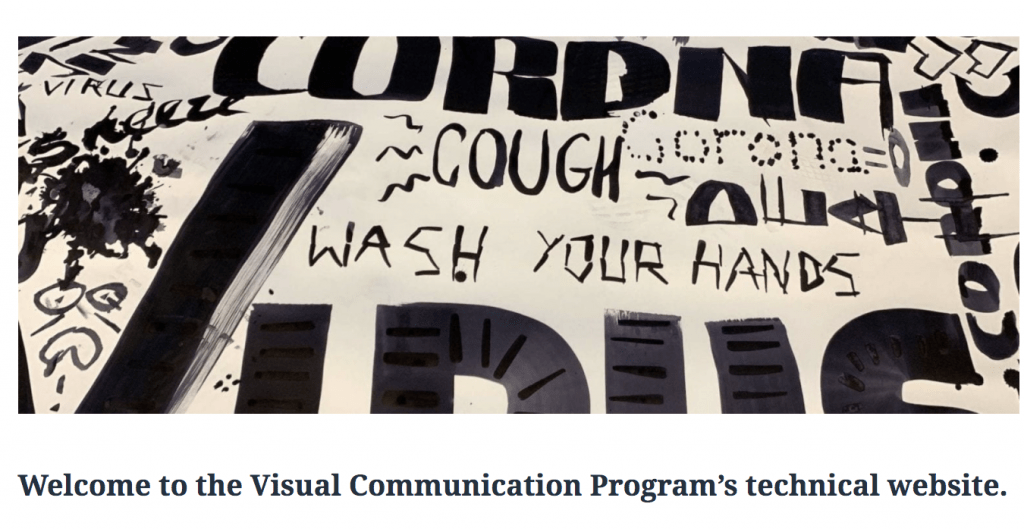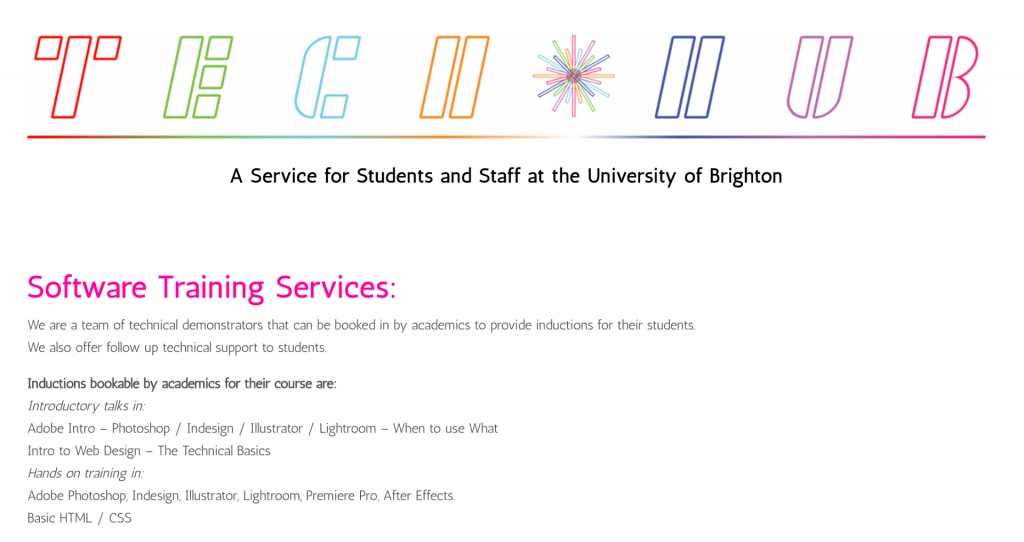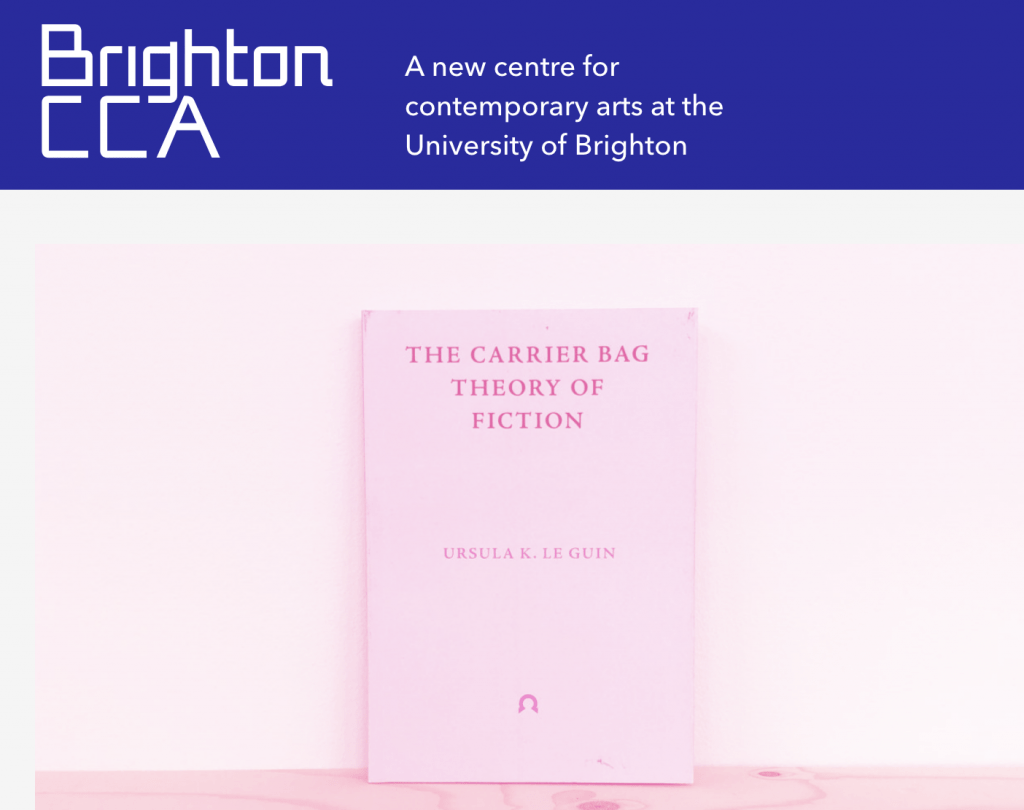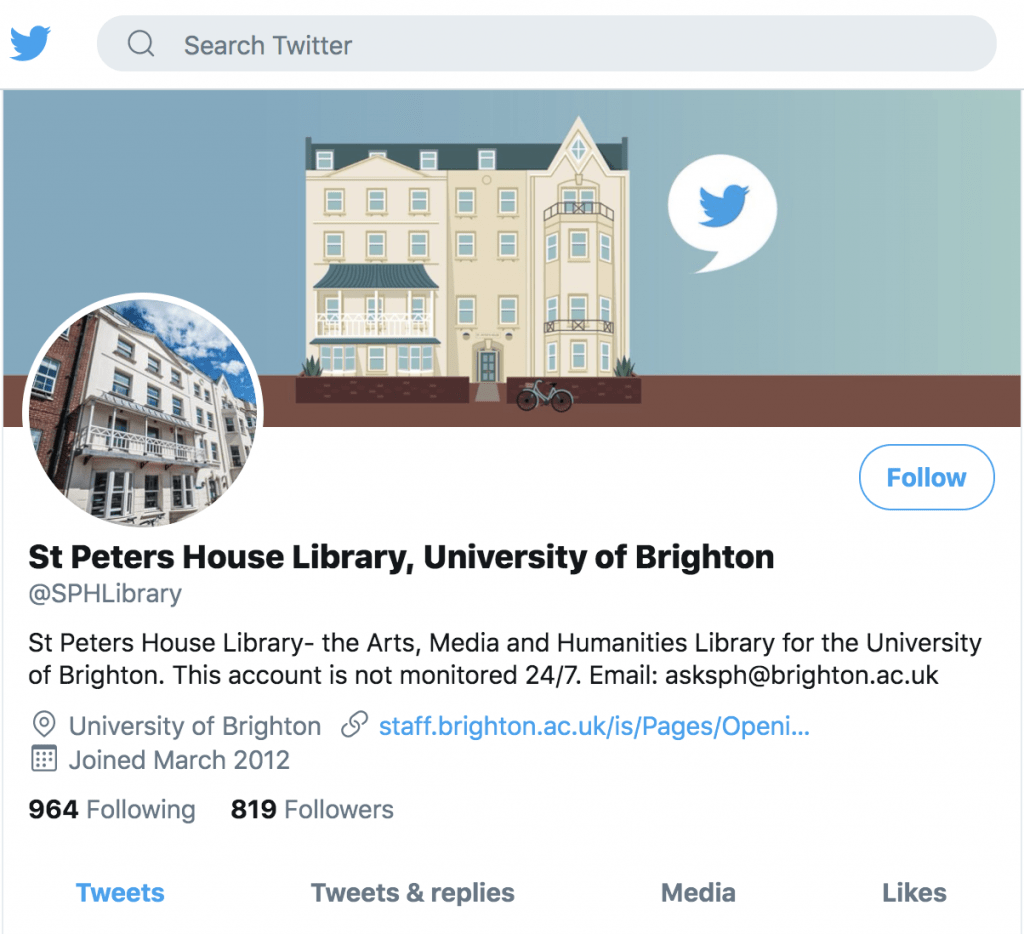http://blogs.brighton.ac.uk/viscommtech/
Digital Technical Training Service:
http://blogs.brighton.ac.uk/techhub/
Well Being:

Brighton Contemporary Art Gallery:
City Campus Art, Design and Humanities website:
https://twitter.com/SPHLibrary?ref_src=twsrc%5Egoogle%7Ctwcamp%5Eserp%7Ctwgr%5Eautho
Materials List:
Whilst there will be materials provided during workshops it is recommended that you have your own equipment and materials for making work.
There is a shop within Grand Parade, City Campus that has a wide range of art materials https://www.brightonsu.com/shopsandcafes/shops/#grandparade
Suppliers in Brighton that offer a discount to students:
CASS Art https://www.cassart.co.uk/locations/brighton
Clarkes Arts & Crafts Supplies https://clarkesofsussex.co.uk/brighton-the-art-shop-brighton/
This list will give you some indication of the equipment that will form the basis of your ‘tool-box’
- A sketch/note book
- USB memory stick (4 gb)
- A diary
- A 30 cm steel ruler
- Typescale (don’t worry if you can’t find one, we have printed versions of these)
- A full range of materials such as pencils, pens and, and whatever else you enjoy working with.
- A Swann-Morton scalpel and 10a blades or Craft knife. Glue stick & masking tape
- Scissors
- Book folding bone
- We recommend that you also bring a mid-range digital camera, 8-10 mega pixels and memory card, or have access to a camera phone.
Whilst the University provides shared specialist IT facilities for use on campus, in the current circumstances of the COVID-19 pandemic, personal access to IT provision such as a laptop is needed in order for you to participate in the course during remote sessions.
The following IT specification is required:
- Access to the internet, ideally at your place of residence.
- Access to a laptop, Mac or PC of the following recommended specification, this will meet your needs as a student and subsequent graduate professional life.
- Intel i5 or equivalent or better
- Windows 10 or Mac OS 10.14 or later
- 8Gb RAM, 256Gb SSD
- GPU Nvidia or Radeon 4Gb VRAM OpenGL 4.1 support
Whilst in university buildings and studios you will have access to wi-fi. The studios are equipped with flatbed scanners and digital printers. An external hard-drive is useful to backup work. – 1 tb minimum
Useful info about PDFsubmissions: http://blogs.brighton.ac.uk/viscommtech/digital-typography/indesign-tips/
Selections from the reading list:
Rawsthorn, A. and Dirié Clément, 2018. Alice Rawsthorn. Design as an Attitude. Zürich: JRP Ringier.
McLuhan, M, & Fiore, Q. (2008). The Medium is the Massage: An Inventory of Effects (Penguin Modern Classics). Penguin Classics.
Virilio, P. (2005). The Information Bomb (Radical Thinkers). Verso Books.
Demos, T.J. (2016). Decolonizing nature: contemporary art and the politics of ecology. Berlin: Sternberg Press.
Campbell, A. (2019). Queer X design: 50 years of signs, symbols, banners, logos, and graphic art of LGBTQ. New York: Black Dog & Leventhal Publishers, May.
Guerrilla Girls and Penguin (2006). The Guerrilla Girls’ bedside companion to the history of Western art. New York: Penguin Books, [Post.
Crowley, D., & Heyer, P. (2006). Communication in History: Technology, Culture,Society. Pearson.
Fletcher, A. (2001). The Art of Looking Sideways. Phaidon Press Ltd. Gombrich, E. H. (1995).
Michael Bierut, Jessica Helfand, S. H. (1999). Looking Closer 3: Classic Writings on Graphic Design (p. 283). Allworth Press.
Frayling C. (2014) Research in Art and Design. Royal College of Art Research Papers, London
Gunn, W., Otto, T. and Rachel Charlotte Smith (2014). Design anthropology : theory and practice. London: Bloomsbury.
Malpass, Matt. (2017) Critical Design in Context: History, Theory and Practices London: Bloomsbury Academic
Bestley, R & Noble, I, (2011) Visual Research: An Introduction to Research Methodologies in Graphic Design London: Bloomsbury Academic
Hall, S. (2012) This Means This, This Means That: A User’s Guide to Semiotics (2nd edition) London: Laurence King Publishing
Machi, L.A. and McEvoy, B. (2016) The literature review: six steps to success Thousand Oaks, CA: Corwin
Breuer, G. and Meer, J., 2012. Women In Graphic Design 1890-2012. Berlin: Jovis.
Mirzoeff, N. (2016). How to see the world. New York: Basic Books.
Tufte, E. R. (1997). Visual Explanations: Images and Quantities, Evidence and Narrative. Graphics Press USA.




